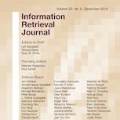5G new radio (NR) technology is introduced to satisfy more demanding services. Ultra-Reliable Low Latency Communication (URLLC) requires very low delay compared with the previous techniques. This is hard to achieve when hybrid automatic repeat request (HARQ) is applied and especially when the feedback channel is erroneous. In this work, we consider various delay components in incremental redundancy (IR) HARQ systems and minimize the average delay by applying asymmetric feedback detection (AFD) and find the optimal transmission length for each transmission attempt. A M/G/1 queuing model is used in this work to analyze the queuing delay in 5G NR when there are multiple uses in the system. Numerical results show that significant performance gains and lower outage probability can be achieved by applying AFD.
翻译:暂无翻译



